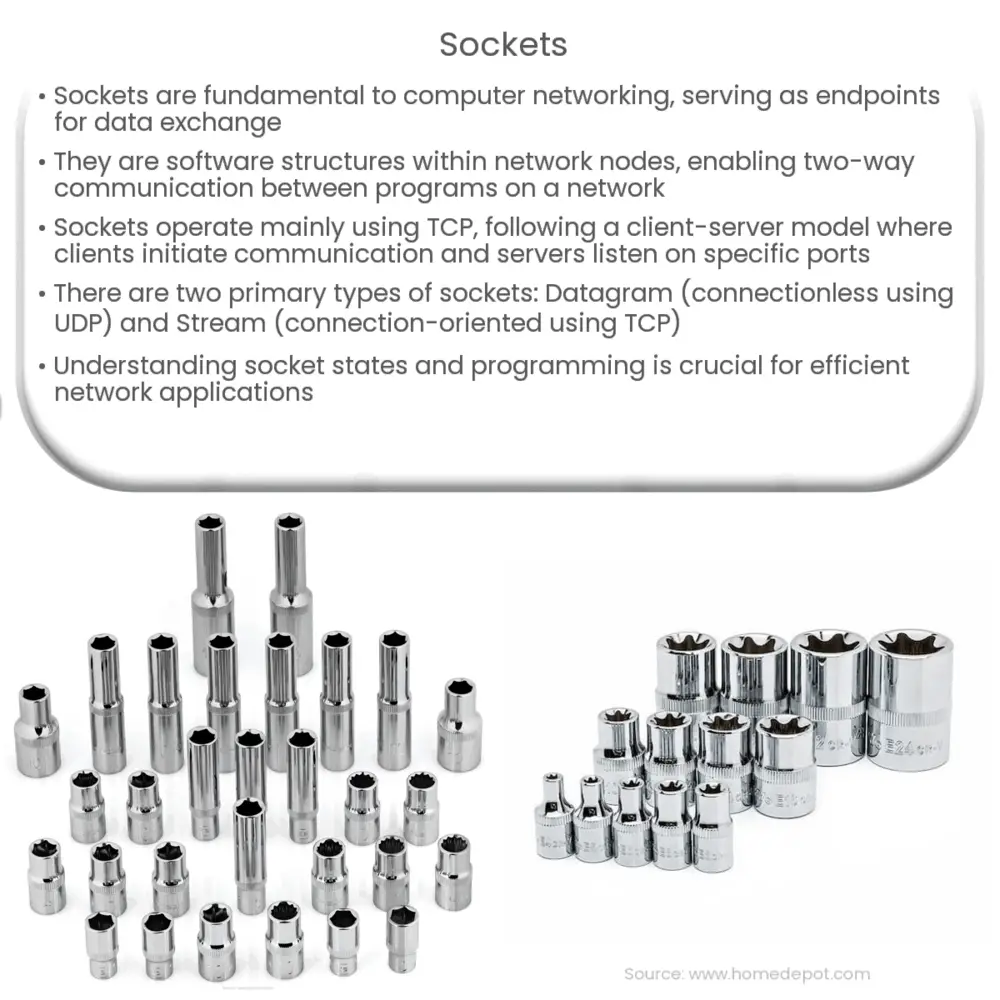Explore the fundamentals of sockets in computer networking, their types, states, and role in network programming.

Introduction to Sockets
Understanding the concept of sockets is fundamental to the field of computer networking. Sockets are a key interface for network communication in computer systems, and serve as the endpoints between which data can be sent and received.
What is a Socket?
In the context of computing, a socket is a software structure within a network node of a computer that serves as an endpoint in a communication across a computer network. Typically, a socket represents a single endpoint of a two-way communication link between two programs running on the network. It’s the fundamental technology behind any kind of network communication done by your computer. For instance, when you type a URL into your web browser, a socket is created for connecting to the website.
The Role of Sockets in Network Programming
Sockets provide the communication mechanism between two computers using TCP (Transmission Control Protocol). A TCP/IP network is a network that is considered a standard for all internet operations, and TCP/IP network communications are defined as a client-server model. Here, the ‘client’ initiates the communication, while the ‘server’ waits for incoming requests by listening to a specific port on the network.
- Client Socket: This socket is responsible for initiating communication. It does this by sending a connection request to the server socket that resides on the server machine.
- Server Socket: The server socket, as the name suggests, resides on the server machine. It is responsible for listening to the incoming connection requests from client sockets.
Sockets and their Types
In networking, there are two primary types of sockets, namely, Datagram Sockets (also known as connectionless sockets) and Stream Sockets (also known as connection-oriented sockets).
- Datagram Sockets (UDP): Datagram sockets use the User Datagram Protocol (UDP) for data transmission. They are connectionless because you don’t need to establish and close a connection explicitly. Instead, you simply send datagrams whenever you wish, and each datagram can be routed and received independently of others.
- Stream Sockets (TCP): Stream sockets use the Transmission Control Protocol (TCP) for data transmission. They are connection-oriented, which means they have a dedicated connection between client and server and offer reliable data transmission.
Understanding Socket States
In network programming, a socket can exist in various states, which depend on whether the socket is part of a server or a client, and the specifics of the data transmission protocol being used. Understanding these states is vital for troubleshooting network problems and creating effective networking applications.
- LISTEN: The server socket is ready to accept connection requests.
- SYN-SENT: The client socket has sent a connection request to the server and is waiting for an acknowledgment.
- SYN-RECEIVED: The server has acknowledged the client’s request and is now waiting for an acknowledgment from the client.
- ESTABLISHED: A connection has been established between the client and the server.
- FIN-WAIT-1 and FIN-WAIT-2: These states represent the stages in which one end of the connection has been closed or is in the process of being closed.
- TIME-WAIT: The socket is waiting to ensure that the connection has been fully terminated.
- CLOSED: The socket is not in use.
Socket Programming
Socket programming refers to the process of creating applications that communicate over a network using the socket API. Several programming languages, including Python, Java, C++, and C#, offer support for socket programming. The general steps involved in socket programming are creating the socket, binding it to a specific address and port, listening to incoming connections, accepting a connection, sending and receiving data, and finally closing the socket.
Conclusion
In summary, sockets play a pivotal role in network communications and form the foundation of any client-server communication model. They allow for structured and reliable data exchange between different network nodes, making it possible to create complex networking applications and protocols. Understanding sockets and their functionalities can open the door to the dynamic world of network programming. Whether it’s building a simple chat application or working with complex distributed systems, the understanding of how sockets work will be an invaluable asset.
From a humble data packet’s journey across the internet to the intricacies of real-time multi-user applications, the story of each byte of data always involves the use of sockets. So, the next time you open a webpage or stream your favorite video, spare a thought for the hard-working sockets that make it all possible!

